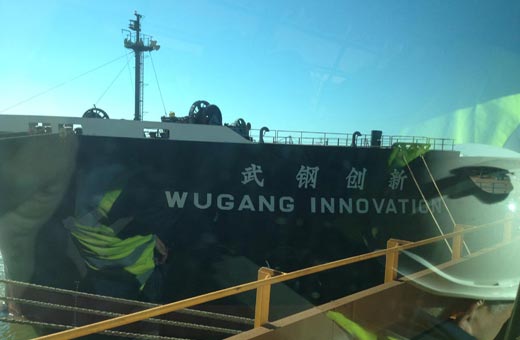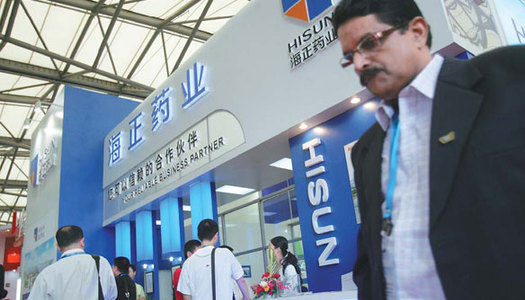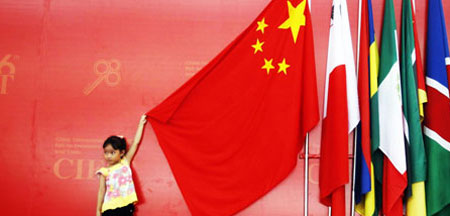
Companies still drawn to Peru, despite obstacles
Updated: 2012-12-11 09:49Seeking win-win business
So far, more than 80 Chinese companies run businesses in Peru, and the majority of them involve energy and mining resources. According to statistics from the Chinese embassy in Peru, China's cumulative investment in the country reached $3 billion by the end of 2011.
Besides Shougang Hierro, other investments by Chinese enterprises include the Aluminum Corp of China's Toromocho copper mine in the country's Junin region, which the company is expected to spend close to $4 billion on, and China Minmetals Corp's $2.5 billion El Galeno copper and gold project in the city of Cajamarca.
"In Peru, many companies have had to cope with labor issues like the ones we've experienced and will have to continue to do as long as they have become big or expect to expand," said Kong.
David Dai, vice-president of Mineral Chinalco Peru SA, agreed.
"Peru is a special country," Dai said. "Whatever we do, and in whatever way we operate, we always feel pressures and doubts."
In 2007, Chinalco announced plans to spend $860 million to buy Peru Copper Inc. The deal gave the company a mine containing more than 12 million tons of copper in Toromocho.
The copper project is the largest Chinalco has been involved in overseas.
The Toromocho mine is expected to open in late 2013, operate for 40 years and produce 250,000 tons of copper a year. If those predictions come true, the amount mined will be equal to almost a quarter of Peru's output last year and a fourth of China's annual output.
"We are confident about the returns on our investment," Dai said.
A Peruvian town occupies the same site as the copper mine. To move it, Chinalco is building a new city, complete with paved roads and houses. Those who live there will have access to amenities that they currently lack, such as modern water, sewage and electrical systems.
"It's going to cost a lot," Dai said. "The new $50 million town will be the biggest privately financed social project in Peru's mining history."
As China's mining and energy companies move faster to expand into overseas markets, foreign countries are increasingly invoking the need to protect their national security as grounds for barring them.
US political resistance, for example, helped to derail China National Offshore Oil Corp's 2005 attempt to acquire the California-based Unocal Corp. This year, the oil company's $18 billion bid to take over the Canada-based oil and gas company Nexen Inc was delayed by months before being approved by the Canadian government on Friday. Even so, the deal continues to stir controversy in the United States, where less than 10 percent of Nexen's assets are located.
Meanwhile, Chinese companies have moved much slower than their Western rivals to exploit mines in places such as Africa and Latin America.
And even when they win bids for the right to develop mines, operating a business in foreign countries has proved harder than many expected, as Shougang and Chinalco have found out in Peru.
Despite showing moderate growth in the past few years, the Peruvian economy continues to be fragile, and there remains a large disparity in incomes. Such conditions could easily lead to public protests.
Labor unions tend to be strong in Peru and have proved aggressive in using strikes and similar tactics to press their demands on companies.
But, "because of the electoral system, the government always unites with labor unions to put pressure on us", Kong said.
Special Coverage
Related Stories
Peru to attract more Chinese tourists
Peru becoming China's major trading partner
China firms to refurbish image in overseas advance
Chinese firms 'not alone' in going global
Chinese firms' push into global market
- BYD exports three electric cars to Thailand
- Grid gets first jolt of residential solar power
- US now largest buyer of China's exports
- China's outbound M&As on the rise
- Tobacco control may entail price, tax rises
- Quanzhou becomes pilot financial reform zone
- New automobiles shine at Geneva Motor Show
- World's longest high-speed rail 'on track'
- Jiugui Liquor involved in plasticizer scandal again
- Accident reignites school bus safety concerns
- China to revise labor law
- Trademark registration under scrutiny
- Dinner ban takes toll on liquor firms
- CIC tables bid for London's Chiswick Park
- Property buyers eye overseas market
- Call for law to protect personal information
- China to cut train ticket prices
- Christmas business
- Solar industry to get jolt from new policies
- KFC chicken under spotlight















